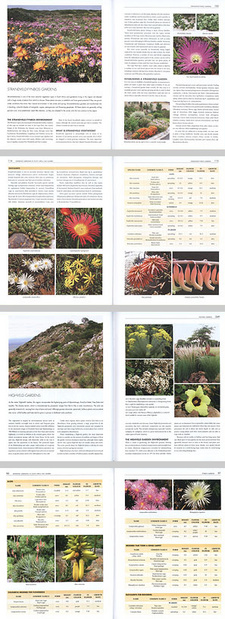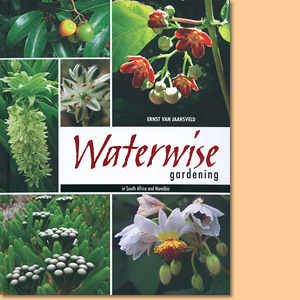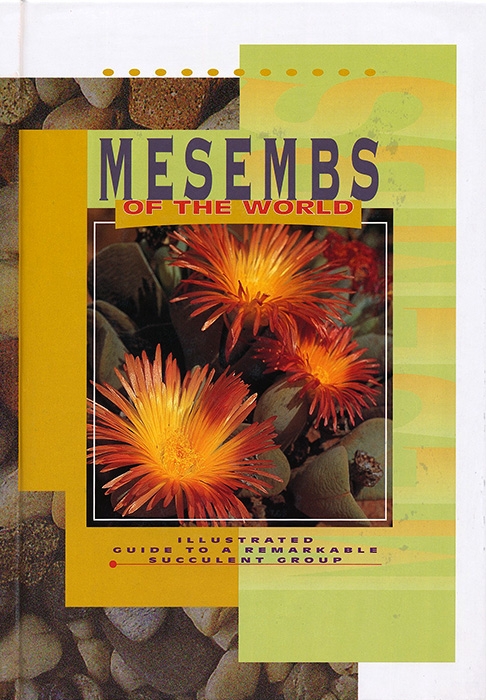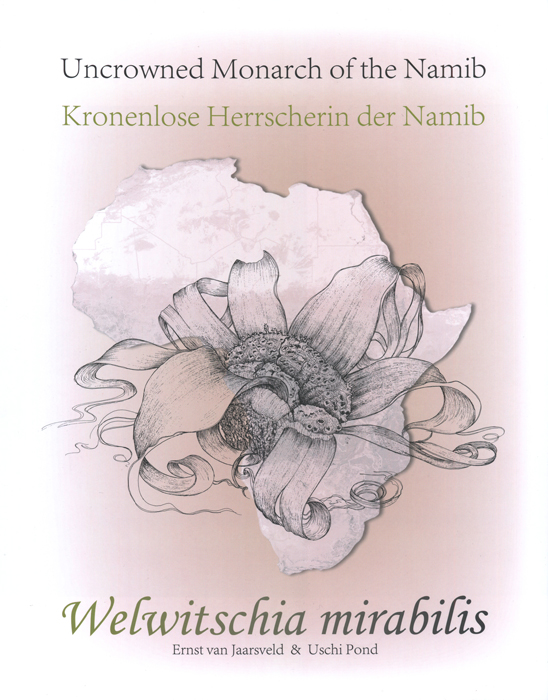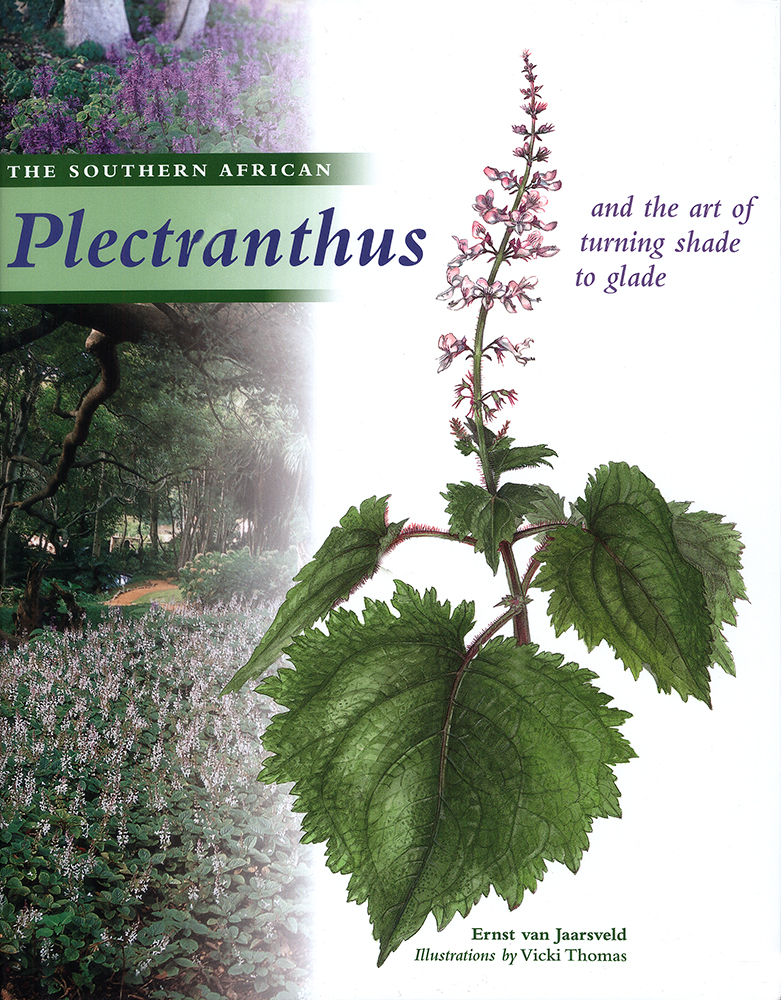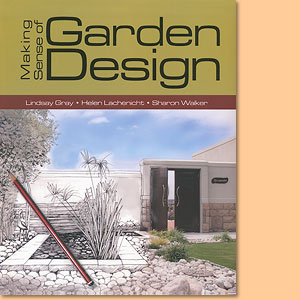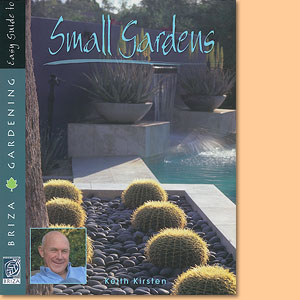Waterwise Gardening in South Africa and Namibia, by Ernst van Jaarsveld
What is waterwise gardening in South Africa and Namibia? In his foreword Ernst van Jaarsveld explains the aims of waterwise gardening.
Waterwise gardening aims to make use of the best of indigenous plants to green our garden environment. Planting locally indigenous plants means they will be adapted to the prevailing conditions and, once established, should become self-sustaining. This not only leads to a reduced gardening bill, but also contributes towards environmental conservation. For example, if you live in a bushveld environment, it makes sense to establish a bushveld garden; or to create a fynbos or strandveld-fynbos garden if you live in the Western Cape. Indigenous gardening is effective gardening, in harmony with the environment and favourable towards birds, insects, frogs and reptiles. The key to waterwise gardening is to create a garden that is appropriate for your area, so that it becomes easy to select the right plants. Remember, though, that individual gardens can have many different microclimates, so you can also choose suitable plants from other regions to add interest and variety. This book deals with indigenous gardening in South Africa and Namibia, two diverse countries that embrace the full spectrum of different climatic regions, from arid deserts to subtropical forests. In order to make the best of your garden, you first need to understand your own environment so that you can select appropriate indigenous plants that are climatically adapted to your local conditions.
Why is waterwise gardening important? Throughout the world, the natural forests are being steadily destroyed, yet these are the green lungs of our planet, absorbing toxic carbon dioxide (C02) and releasing life-giving oxygen. (Remember your school biology lessons: plants 'breathe in' carbon dioxide and 'exhale' oxygen.) A decrease in forested areas means that less carbon dioxide is absorbed, so more of it remains in the atmosphere, where it traps the sun's heat. This results in global warming which, in turn, precipitates climate change. And, in South Africa, as elsewhere, once our environment becomes ever warmer and more arid, our natural water resources will come under increased pressure. In terms of gardening, this means we need to move away from expansive lawns and green 'European' gardens towards what is right for our land.
Historically, plants from Europe and elsewhere were brought to Africa for planting in our gardens. At the time, there were definite benefits to this in both agricultural and horticultural terms. However, many of these plants came from countries with climatic conditions quite different from our own, so we 'manipulated' our local conditions by additional watering or enriching the soils in order to allow these 'aliens' to thrive. In a region where two-thirds of the land consists of semi-desert, gardening with 'exotic' species has now become an expensive and wasteful practice and an unnecessary strain on our scarce water resources. Therefore, in the interests of conservation, we should strive towards having our everyday gardening practices be in harmony with nature. This way, not only will we conserve water, but our gardens will take on a truly African character.
However, as our towns and cities expand, more and more indigenous plants are threatened with extinction. We tend to take our 23,000-plus indigenous plant species for granted, but South Africa's flora has long been held in high regard overseas and it continues to make an impact, especially with regard to ornamental gardening. Pelargoniums (Pelargonium spp.) and Hen-and-chickens or Spider plant (Chlorophytum comosum) are two of the most popular indoor plants in Europe, while our Crane flower (Strelitzia reginae) is planted so widely in Los Angeles that it is commonly regarded as that city's floral emblem!
South African plants are cultivated in many countries. Every year, new hybrids and cultivars of our indigenous plants are released onto the market. This incredibly rich 'natural goldmine' holds tremendous potential - not only for the horticultural industry but also in fields such as medicine and agriculture. Because plant species can vary genetically within their populations, it is possible to selectively breed plants to meet particular needs. For example, the many species of Bush lily (Clivia miniata) available to gardeners were all obtained from the original wild source. Another example is watermelon, a globally popular fruit that derives from the indigenous wild Tsamma or Kalahari desert melon (Citrillus lanatus), which occurs naturally throughout the drier areas of southern Africa.
Table of content: Waterwise Gardening in South Africa and Namibia
Becoming waterwise
What is waterwise gardening?
Horticultural categories for garden plants
Establishing a waterwise garden
Attracting wildlife to your garden
The importance of soil, compost and mulch
Planting and establishing a garden
Pruning
Useful indigenous plants
Rockeries and ponds
Indigenous creepers
Growing new plants from seeds and cuttings
Managing pests, weeds and diseases
Regional gardens
Establishing your garden type
Map: Biomes of southern Africa
Fynbos gardens
Strandveld-fynbos gardens
Succulent Karoo gardens
Karoo gardens
Thicket gardens
Namib Desert gardens
Bushveld gardens
Highveld gardens
Subtropical East coast gardens
Indigenous house plants
Index
This is an extract and the content table of: Waterwise Gardening in South Africa and Namibia, by Ernst van Jaarsveld.
Book title: Waterwise Gardening in South Africa and Namibia
Author: Ernst van Jaarsveld
Publisher: Random House Struik
Cape Town, South Africa 2010
ISBN 9781770072176
Hardcover, 22x29 cm, 368 pages, throughout colour photographs
van Jaarsveld, Ernst im Namibiana-Buchangebot
Waterwise Gardening in South Africa and Namibia
Waterwise Gardening in South Africa and Namibia is aimed at anyone who wants to create a new garden or convert an existing one to waterwise principles.
Mesembs of the world
This is a well-illustrated, easy-to-read guide of all the 123 mesembs genera that are currently recognised worldwide.
Welwitschia mirabilis. Kronenlose Herrscherin der Namib
Einzigartiges botanisches Werk über die bizarre Welwitschia mirabilis, kronenlose Herrscherin der Namib in Namibia und Angola.
The southern African Plectranthus and the Art of Turning Shade to Glade
This major work on the southern African Plectranthus, surveys the discovery and naming of this beautiful plants and includes an account of the author's own travels in search of them.
Weitere Buchempfehlungen
Making Sense of Garden Design
A guide to development and evolution of a uniquely South African gardening style
Easy Guide to Small Gardens
Represents a new approach in Southern African gardening towards smaller houses and spaces and apartment type homes

